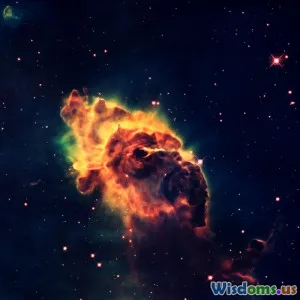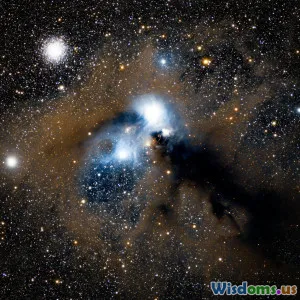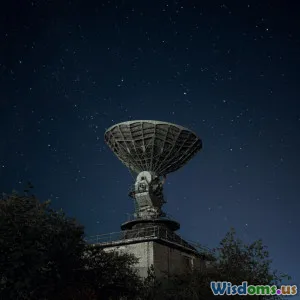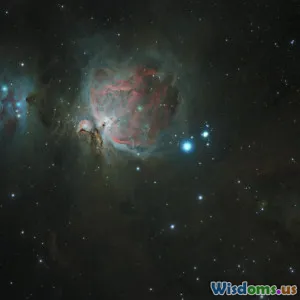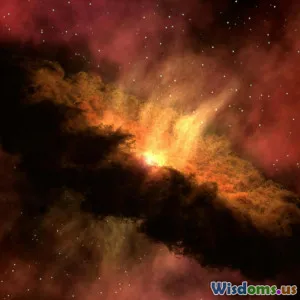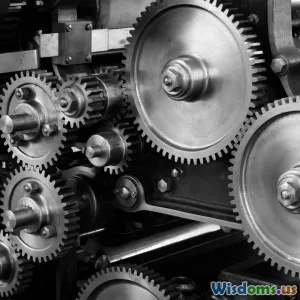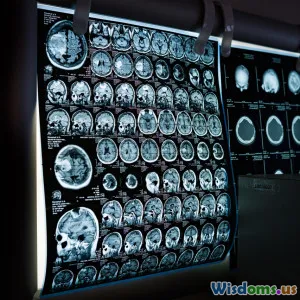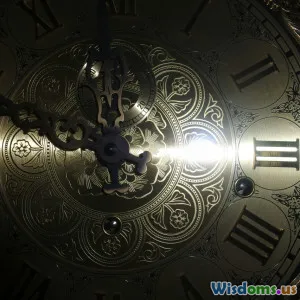
Unveiling the Secrets of the Universe's Expansion
7 min read Explore the fascinating story behind the universe's expansion and its cosmic mysteries. (0 Reviews)
Unveiling the Secrets of the Universe's Expansion
Introduction
The night sky has always been a vast canvas of curiosity, inspiring humanity for millennia. Among the most profound inquiries is the question: How is our universe changing? The groundbreaking realization that the universe is expanding revolutionized not only astronomy but also our understanding of the cosmos and our place within it. This article embarks on a deep dive into the secrets behind the universe’s expansion — exploring the evidence, the key players, and the mysterious components driving this cosmic phenomenon.
The Dawn of Discovery: Hubble’s Legacy
In 1929, Edwin Hubble, an American astronomer, made a monumental breakthrough. By observing the redshifts in the light from distant galaxies, Hubble concluded that galaxies are moving away from us, and crucially, that their speed is proportional to their distance. This relationship, now known as Hubble’s Law, revealed unequivocally that the universe was not static but expanding.
Redshift: The Universe’s Doppler Effect
Much like the change in pitch of a passing ambulance, light waves stretch when objects in space move away from us, shifting toward the red end of the spectrum. This redshift acts as a cosmic speedometer. Hubble’s measurements showed that more distant galaxies have greater redshifts, confirming that the fabric of space-time itself is stretching.
Impact on Cosmology
Hubble’s discovery overturned the previously dominant belief in a static universe and supported the theoretical models introduced by Albert Einstein and Georges Lemaître about an expanding cosmos. This paved the way for the Big Bang Theory, providing a starting point for our expanding universe approximately 13.8 billion years ago.
Peering Into the Unknown: Dark Energy and Accelerated Expansion
Initially, scientists assumed the universe’s expansion should gradually slow, restrained by the gravitational pull of matter. However, in 1998, two independent research teams studying Type Ia supernovae—stellar explosions used as standard candles—found something astonishing: the expansion rate is accelerating.
The Enigmatic Dark Energy
This unexpected acceleration hinted at a mysterious force named dark energy, thought to constitute about 68% of the universe’s total energy content. Dark energy acts as a repulsive force, counteracting gravity and driving galaxies apart at an ever faster pace.
What is Dark Energy?
Despite extensive research, dark energy remains one of the greatest puzzles in physics. Some theories propose it as a property inherent to space itself, a constant energy density known as the cosmological constant introduced originally by Einstein. Others suggest it could be a dynamic field changing over time, perhaps linked to quantum vacuum fluctuations or undiscovered particles.
Measuring Dark Energy
NASA’s Wide Field Infrared Survey Telescope (WFIRST) and the European Space Agency’s Euclid mission aim to better understand dark energy by mapping the structure and growth of the universe’s expansion across cosmic time.
Cosmic Tools and Techniques: Tracking the Universe’s Growth
Understanding the universe’s expansion requires numerous observational probes and theoretical tools:
Cosmic Microwave Background Radiation (CMB)
The CMB is the relic radiation from roughly 380,000 years after the Big Bang. Satellites like COBE, WMAP, and Planck have measured the tiny temperature fluctuations in the CMB, providing precision data about the universe's shape, composition, and expansion.
Baryon Acoustic Oscillations (BAO)
BAOs are regular, periodic fluctuations in the density of visible baryonic matter (normal matter) in the universe. They serve as “standard rulers” for distance measurement, helping map the expansion.
Galaxy Surveys
Massive surveys such as the Sloan Digital Sky Survey (SDSS) have catalogued millions of galaxies, allowing astronomers to analyze how cosmic structures evolve alongside the universe's expansion.
The Future of Expansion: Ultimate Destiny of the Cosmos
The fate of the universe is tied deeply to understanding the exact nature of dark energy and its influence over cosmological time.
Possible Scenarios
-
The Big Freeze: If acceleration continues, galaxies will eventually drift beyond each other's observable horizons, stars will burn out, and the cosmos will cool toward absolute zero.
-
The Big Crunch: Conversely, if dark energy somehow reverses or diminishes, gravity could overtake cosmic expansion, collapsing the universe back into a dense state.
-
The Big Rip: In some theoretical models, expansion accelerates so dramatically that it tears galaxies, stars, and eventually atomic matter apart.
Current evidence favors a continued expansion resembling the Big Freeze but underscores the importance of further exploration.
Conclusion
The story of the universe's expansion is a testament to human ingenuity and curiosity. From Hubble's telescope to modern space missions studying dark energy, each discovery uncovers new layers of the cosmic mystery. Understanding this expansion not only refines our grasp of fundamental physics but also frames our existential contemplation about the origins and ultimate fate of everything. As technology advances and observations become more precise, humankind moves ever closer to unraveling the most profound secrets of our grand universe.
“For me, it is far better to grasp the Universe as it really is than to persist in delusion, however satisfying and reassuring.” — Carl Sagan
The expanding universe invites us all to look up and wonder, reminding us that while much remains unseen, our quest for knowledge continues to push the boundaries of what we know.
Explore more on space, cosmology, and cutting-edge scientific findings that shape our understanding of the cosmos.
Rate the Post
User Reviews
Popular Posts










